Epson DS-1660W operation manual
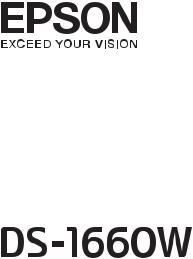
User's Guide
NPD5441-01 EN
User's Guide
Copyright
Copyright
No part of this publication may be reproduced, stored in a retrieval system, or transmitted in any form or by any means, electronic, mechanical, photocopying, recording, or otherwise, without the prior written permission of Seiko Epson Corporation. No patent liability is assumed with respect to the use of the information contained herein. Neither is any liability assumed for damages resulting from the use of the information herein. The information contained herein is designed only for use with this Epson product. Epson is not responsible for any use of this information as applied to other products.
Neither Seiko Epson Corporation nor its affiliates shall be liable to the purchaser of this product or third parties for damages, losses, costs, or expenses incurred by the purchaser or third parties as a result of accident, misuse, or abuse of this product or unauthorized modifications, repairs, or alterations to this product, or (excluding the U.S.) failure to strictly comply with Seiko Epson Corporation's operating and maintenance instructions.
Seiko Epson Corporation and its affiliates shall not be liable for any damages or problems arising from the use of any options or any consumable products other than those designated as Original Epson Products or Epson Approved Products by Seiko Epson Corporation.
Seiko Epson Corporation shall not be held liable for any damage resulting from electromagnetic interference that occurs from the use of any interface cables other than those designated as Epson Approved Products by Seiko Epson Corporation.
© 2016 Seiko Epson Corporation. All rights reserved.
The contents of this manual and the specifications of this product are subject to change without notice.
2
User's Guide
Trademarks
Trademarks
EPSON®is a registered trademark, and EPSON EXCEED YOUR VISION or EXCEED YOUR VISION is a trademark of the Seiko Epson Corporation.
Microsoft®, Windows®, Windows Server®, and Windows Vista® are either registered trademarks or trademarks of Microsoft Corporation in the United States and/or other countries.
Apple®, Mac OS®, and OS X® are trademarks of Apple Inc., registered in the U.S. and other countries.
Adobe®, Adobe Reader®, and Acrobat® are registered trademarks of Adobe Systems Incorporated.
Intel® is a registered trademark of Intel Corporation.
Wi-Fi®, Wi-Fi Alliance®, and Wi-Fi Protected Access® (WPA) are registered trademarks of the Wi-Fi Alliance. Wi-Fi Protected Setup™, and WPA2™ are trademarks of the Wi-Fi Alliance.
The SuperSpeed USB Trident Logo is a registered trademark of USB Implementers Forum, Inc.
Epson Scan 2 Software is based in part on the work of the Independent JPEG Group.
libtiff
Copyright © 1988-1997 Sam Leffler Copyright © 1991-1997 Silicon Graphics, Inc.
Permission to use, copy, modify, distribute, and sell this software and its documentation for any purpose is hereby granted without fee, provided that (i) the above copyright notices and this permission notice appear in all copies of the software and related documentation, and (ii) the names of Sam Leffler and Silicon Graphics may not be used in any advertising or publicity relating to the software without the specific, prior written permission of Sam Leffler and Silicon Graphics.
THE SOFTWARE IS PROVIDED “AS-IS” AND WITHOUT WARRANTY OF ANY KIND, EXPRESS, IMPLIED OR OTHERWISE, INCLUDING WITHOUT LIMITATION, ANY WARRANTY OF MERCHANTABILITY OR FITNESS FOR A PARTICULAR PURPOSE.
IN NO EVENT SHALL SAM LEFFLER OR SILICON GRAPHICS BE LIABLE FOR ANY SPECIAL, INCIDENTAL, INDIRECT OR CONSEQUENTIAL DAMAGES OF ANY KIND, OR ANY DAMAGES WHATSOEVER RESULTING FROM LOSS OF USE, DATA OR PROFITS, WHETHER OR NOT ADVISED OF THE POSSIBILITY OF DAMAGE, AND ON ANY THEORY OF LIABILITY, ARISING OUT OF OR IN CONNECTION WITH THE USE OR PERFORMANCE OF THIS SOFTWARE.
General Notice: Other product names used herein are for identification purposes only and may be trademarks of their respective owners. Epson disclaims any and all rights in those marks.
3

User's Guide
Contents
Contents
Copyright
Trademarks
About This Manual
Introduction to the Manuals. . . . . . . . . . . . . . . . . . .6
Marks and Symbols. . . . . . . . . . . . . . . . . . . . . . . . . 6
Descriptions Used in this Manual. . . . . . . . . . . . . . . 6
Operating System References. . . . . . . . . . . . . . . . . . 7
Important Instructions
Safety Instructions. . . . . . . . . . . . . . . . . . . . . . . . . . 8
Restrictions on Copying. . . . . . . . . . . . . . . . . . . . . .9
Scanner Basics
Part Names and Functions. . . . . . . . . . . . . . . . . . . 10
Buttons and Lights on the Control Panel. . . . . . . . . 11
Buttons. . . . . . . . . . . . . . . . . . . . . . . . . . . . . . . 11
Error Indicators. . . . . . . . . . . . . . . . . . . . . . . . . 13
Information on Applications. . . . . . . . . . . . . . . . . .13
Epson Scan 2. . . . . . . . . . . . . . . . . . . . . . . . . . . 14 Document Capture Pro / Document Capture. . . .14 EPSON Software Updater. . . . . . . . . . . . . . . . . .14 Epson DocumentScan. . . . . . . . . . . . . . . . . . . . 14 EpsonNet Conf ig. . . . . . . . . . . . . . . . . . . . . . . . 14 Web Config. . . . . . . . . . . . . . . . . . . . . . . . . . . . 14
Options Information. . . . . . . . . . . . . . . . . . . . . . . 15
Network Interface Unit Codes. . . . . . . . . . . . . . 15
Specifications of Originals and
Placing Originals
Specifications of Originals for Scanning from
the ADF. . . . . . . . . . . . . . . . . . . . . . . . . . . . . . . . 16
General Specifications for Originals being Scanned. . . . . . . . . . . . . . . . . . . . . . . . . . . . . . 16 Types of Originals that Require Attention. . . . . . 18 Types of Originals that Must Not be Scanned. . . .18
Placing Originals into the ADF. . . . . . . . . . . . . . . . 19
Placing Standard Size Originals. . . . . . . . . . . . . .19
Placing Long Paper. . . . . . . . . . . . . . . . . . . . . . 20
Placing Originals on the Scanner Glass. . . . . . . . . . 22
Placing an Original. . . . . . . . . . . . . . . . . . . . . . 22 Placing T hick Originals. . . . . . . . . . . . . . . . . . . 23
Basic Scanning
Scanning Using Epson Scan 2. . . . . . . . . . . . . . . . . 25
Setting a Resolution That Suits the Scanning
Purpose. . . . . . . . . . . . . . . . . . . . . . . . . . . . . . .28
Scanning Using Document Capture Pro
(Windows). . . . . . . . . . . . . . . . . . . . . . . . . . . . . . .28
Scanning Using Document Capture (Mac OS X). . . 32
Scanning Using a Scanner Button. . . . . . . . . . . . . . 34
Advanced Scanning
Creating Scanned Images to Suit Your Needs. . . . . . 35
Image Adjustment Features. . . . . . . . . . . . . . . . 35
Editing Scanned Pages Using Epson Scan 2. . . . . 42
Saving as a Searchable PDF. . . . . . . . . . . . . . . . .42
Saving as an Office Format File (for Windows
Only). . . . . . . . . . . . . . . . . . . . . . . . . . . . . . . . 43
Various Types of Saving and Transferring. . . . . . . . 44
Sorting and Saving Scanned Images into a
Separate Folder (for Windows Only). . . . . . . . . . 44 Scanning to a Cloud Service. . . . . . . . . . . . . . . . 45 Uploading to an FTP Server. . . . . . . . . . . . . . . . 46 Attaching Scanned Images to an Email. . . . . . . . 47 Printing Scanned Images. . . . . . . . . . . . . . . . . . 48
Scanning Using Specified Scanning Settings (Job). . 48
Setting a Job. . . . . . . . . . . . . . . . . . . . . . . . . . . .49 Assigning a Job to the Scanner Button. . . . . . . . . 49
Scanning from Smart Devices Using NFC Tag. . . . . 50
Network Settings
Network Connection Types. . . . . . . . . . . . . . . . . . 51
Wi-Fi Connection. . . . . . . . . . . . . . . . . . . . . . . 51
AP Mode Connection. . . . . . . . . . . . . . . . . . . . 51
Connecting to a Computer. . . . . . . . . . . . . . . . . . . 52
Connecting to a Smart Device. . . . . . . . . . . . . . . . 54
Making Wi-Fi Settings from the Control Panel. . . . .54
Making Wi-Fi Settings by Push Button Setup (WPS). . . . . . . . . . . . . . . . . . . . . . . . . . . . . . . . 54 Making Wi-Fi Settings by PIN Code Setup
(WPS). . . . . . . . . . . . . . . . . . . . . . . . . . . . . . . . 55 Making AP Mode Settings. . . . . . . . . . . . . . . . . 55
Checking the Network Status Using Network
Light. . . . . . . . . . . . . . . . . . . . . . . . . . . . . . . . . . . 56
Replacing or Adding New Access Points. . . . . . . . . 56
Changing the Connection Method to a Computer. . 56
4

User's Guide
Contents
Disabling the Network Setting from the Control Panel. . . . . . . . . . . . . . . . . . . . . . . . . . . . . . . . . . .57
Restoring the Network Settings from the
Control Panel. . . . . . . . . . . . . . . . . . . . . . . . . . . . 58
Maintenance
Cleaning Outside the Scanner. . . . . . . . . . . . . . . . .59
Cleaning the ADF. . . . . . . . . . . . . . . . . . . . . . . . . 59
Cleaning the Scanner Glass. . . . . . . . . . . . . . . . . . .62
Energy Saving. . . . . . . . . . . . . . . . . . . . . . . . . . . . 63
Transporting the Scanner. . . . . . . . . . . . . . . . . . . . 64
Updating Applications and Firmware. . . . . . . . . . . 64
Solving Problems
Scanner Problems. . . . . . . . . . . . . . . . . . . . . . . . . 66
Scanner Lights Indicate an Error. . . . . . . . . . . . .66 The Scanner Does Not Turn On. . . . . . . . . . . . . 66
Problems Starting Scanning. . . . . . . . . . . . . . . . . . 66
Cannot Start Epson Scan 2. . . . . . . . . . . . . . . . . 66
Pressing a Scanner Button Does Not Start the
Correct Application. . . . . . . . . . . . . . . . . . . . . . 67
Paper Feeding Problems. . . . . . . . . . . . . . . . . . . . . 67
Removing Jammed Originals from the Scanner. . 67 Multiple Originals Are Fed. . . . . . . . . . . . . . . . . 69 T he Originals Get Dirty. . . . . . . . . . . . . . . . . . . 69 Scanning Speed Slows Down when Scanning Continuously. . . . . . . . . . . . . . . . . . . . . . . . . . .69 Scanning Takes a Long Time. . . . . . . . . . . . . . . .70
Scanned Image Problems. . . . . . . . . . . . . . . . . . . . 70
Uneven Colors, Dirt, Spots, and so on Appear when Scanning from the Scanner Glass. . . . . . . . 70 Straight Lines Appear when Scanning from
ADF. . . . . . . . . . . . . . . . . . . . . . . . . . . . . . . . . 70 T he Image Quality is Rough. . . . . . . . . . . . . . . . 70 Offset Appears in the Background of Images. . . . 71 Text is Blurred. . . . . . . . . . . . . . . . . . . . . . . . . . 71 Moiré Patterns (Web-Like Shadows) Appear. . . . 71 Cannot Scan the Correct Area on the
Scanner Glass. . . . . . . . . . . . . . . . . . . . . . . . . . 72 The Edge of the Original is Not Scanned
when Automatically Detecting the Size of the Original. . . . . . . . . . . . . . . . . . . . . . . . . . . . . . .72 Text is Not Recognized Correctly when
Saving as a Searchable PDF. . . . . . . . . . . . . . . . .72 Binding Margins of a Booklet are Distorted
or Blurred. . . . . . . . . . . . . . . . . . . . . . . . . . . . . 73 Cannot Solve Problems in the Scanned Image. . . 73
Network Problems. . . . . . . . . . . . . . . . . . . . . . . . . 74
When You Cannot Make Network Settings. . . . . 74
The Scanner Suddenly Cannot Scan over a Network Connection. . . . . . . . . . . . . . . . . . . . . 76 The Scanner Suddenly Cannot Scan Using a
USB Connection. . . . . . . . . . . . . . . . . . . . . . . . 77
Uninstalling and Installing Applications. . . . . . . . . 77
Uninstalling Your Applications. . . . . . . . . . . . . . 77
Installing Your Applications. . . . . . . . . . . . . . . . 79
Technical Specifications
General Scanner Specifications. . . . . . . . . . . . . . . . 80
Wi-Fi Specif ications. . . . . . . . . . . . . . . . . . . . . . . . 81
Security Protocol. . . . . . . . . . . . . . . . . . . . . . . . . . 81
Dimensional Specif ications. . . . . . . . . . . . . . . . . . .81
Electrical Specifications. . . . . . . . . . . . . . . . . . . . . 82
Environmental Specif ications. . . . . . . . . . . . . . . . . 82
System Requirements. . . . . . . . . . . . . . . . . . . . . . . 83
Standards and Approvals
Standards and Approvals for U.S. Model. . . . . . . . . 84
Standards and Approvals for European Model. . . . . 84
Standards and Approvals for Australian Model. . . . 84
Where to Get Help
Technical Support Web Site. . . . . . . . . . . . . . . . . . 86
Contacting Epson Support. . . . . . . . . . . . . . . . . . . 86
Before Contacting Epson. . . . . . . . . . . . . . . . . . 86 Help for Users in Europe. . . . . . . . . . . . . . . . . . 86 Help for Users in Taiwan. . . . . . . . . . . . . . . . . . 87 Help for Users in Australia. . . . . . . . . . . . . . . . . 87 Help for Users in Singapore. . . . . . . . . . . . . . . . 88 Help for Users in T hailand. . . . . . . . . . . . . . . . . 88 Help for Users in Vietnam. . . . . . . . . . . . . . . . . .88 Help for Users in Indonesia. . . . . . . . . . . . . . . . 89 Help for Users in Hong Kong. . . . . . . . . . . . . . . 90 Help for Users in Malaysia. . . . . . . . . . . . . . . . . 91 Help for Users in India. . . . . . . . . . . . . . . . . . . . 91 Help for Users in the Philippines. . . . . . . . . . . . .92
5
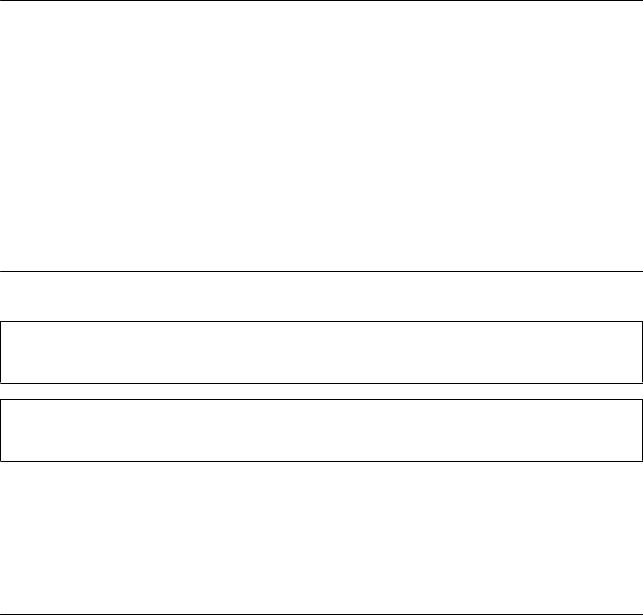
User's Guide
About This Manual
About This Manual
Introduction to the Manuals
The latest versions of the following manuals are available from the Epson support website.
http://www.epson.eu/Support (Europe)
http://support.epson.net/ (outside Europe)
Setup Guide (paper manual)
Provides you with information on setting up the product and installing the application.
User's Guide (digital manual)
Provides instructions on using the product, maintenance, and solving problems.
As well as the manuals above, see the help included in the various Epson applications.
Marks and Symbols
!Caution:
Instructions that must be followed carefully to avoid bodily injury.
cImportant:
Instructions that must be observed to avoid damage to your equipment.
Note:
Provides complementary and reference information.
Related Information
& Links to related sections.
Descriptions Used in this Manual
Screenshots for the applications are from Windows 10 or Mac OS X v10.10.x. The content displayed on the screens varies depending on the model and situation.
Illustrations used in this manual are for reference only. Although they may differ slightly from the actual product, the operating methods are the same.
6

User's Guide
About This Manual
Operating System References
Windows
In this manual, terms such as "Windows 10", "Windows 8.1", "Windows 8", "Windows 7", "Windows Vista", "Windows XP", "Windows Server 2012 R2", "Windows Server 2012", "Windows Server 2008 R2", "Windows Server 2008", "Windows Server 2003 R2", and "Windows Server 2003" refer to the following operating systems. Additionally, "Windows" is used to refer to all versions.
Microsoft® Windows® 10 operating system
Microsoft® Windows® 8.1 operating system
Microsoft® Windows® 8 operating system
Microsoft® Windows® 7 operating system
Microsoft® Windows Vista® operating system
Microsoft® Windows® XP operating system Service Pack 3
Microsoft® Windows® XP Professional x64 Edition operating system Service Pack 2
Microsoft® Windows Server®2012 R2 operating system
Microsoft® Windows Server®2012 operating system
Microsoft® Windows Server®2008 R2 operating system
Microsoft® Windows Server®2008 operating system
Microsoft® Windows Server®2003 R2 operating system
Microsoft® Windows Server®2003 operating system Service Pack 2
Mac OS X
In this manual, "Mac OS X v10.11.x" refers to OS X El Capitan, "Mac OS X v10.10.x" refers to OS X Yosemite, "Mac OS X v10.9.x" refers to OS X Mavericks, and "Mac OS X v10.8.x" refers to OS X Mountain Lion. Additionally, "Mac OS X" is used to refer to "Mac OS X v10.11.x", "Mac OS X v10.10.x", "Mac OS X v10.9.x", "Mac OS X v10.8.x", "Mac OS X v10.7.x", and "Mac OS X v10.6.8".
7

User's Guide
Important Instructions
Important Instructions
Safety Instructions
Read and follow these instructions to ensure safe use of this product. Make sure you keep this manual for future reference. Also, be sure to follow all warnings and instructions marked on the product.
Some of the symbols used on your product are to ensure safety and proper use of the product. Visit the following Web site to learn the meaning of the symbols.
http://support.epson.net/symbols
Place the product on a flat, stable surface that extends beyond the base of the product in all directions. If you place the product by the wall, leave more than 10 cm between the back of the product and the wall.
Place the product close enough to the computer for the interface cable to reach it easily. Do not place or store the product outdoors, near excessive dirt or dust, water, heat sources, or in locations subject to shocks, vibrations, high temperature or humidity, direct sunlight, strong light sources, or rapid changes in temperature or humidity.
Do not use with wet hands.
Place the product near an electrical outlet where the power cord plug can be easily unplugged.
The power cord should be placed to avoid abrasions, cuts, fraying, crimping, and kinking. Do not place objects on top of the cord and do not allow the power cord to be stepped on or run over. Be particularly careful to keep the cord straight at the end.
Use only the power cord supplied with the product and do not use the cord with any other equipment. Use of other cords with this product or the use of the supplied power cord with other equipment may result in fire or electric shock.
Use only the type of power source indicated on the product’s label, and always supply power directly from a standard domestic electrical outlet.
When connecting this product to a computer or other device with a cable, ensure the correct orientation of the connectors. Each connector has only one correct orientation. Inserting a connector in the wrong orientation may damage both devices connected by the cable.
Avoid using outlets on the same circuit as photocopiers or air control systems that regularly switch on and off.
If you use an extension cord with the product, make sure the total ampere rating of the devices plugged into the extension cord does not exceed the cord’s ampere rating. Also, make sure the total ampere rating of all devices plugged into the wall outlet does not exceed the wall outlet’s ampere rating.
Never disassemble, modify, or attempt to repair the product, or product option by yourself except as specifically explained in the product’s guides.
Do not insert objects into any opening as they may touch dangerous voltage points or short out parts. Beware of electrical shock hazards.
If damage occurs to the plug, replace the cord set or consult a qualified electrician. If there are fuses in the plug, make sure you replace them with fuses of the correct size and rating.
Unplug the product and the power cord, and refer servicing to qualified service personnel under the following conditions: The power cord or plug is damaged; liquid has entered the product; the product or the power cord has been dropped or the case has been damaged; the product or the power cord does not operate normally or exhibits a distinct change in performance. (Do not adjust controls that are not covered by the operating instructions.)
8

User's Guide
Important Instructions
Unplug the product and the power cord before cleaning. Clean with a damp cloth only. Do not use liquid or aerosol cleaners.
If you are not going to use the product or options for a long period, be sure to unplug the power cord from the electrical outlet.
After replacing consumable parts, dispose of them correctly following the rules of your local authority. Do not disassemble them.
Keep this product at least 22 cm away from cardiac pacemakers. Radio waves from this product may adversely affect the operation of cardiac pacemakers.
Do not use this product inside medical facilities or near medical equipment. Radio waves from this product may adversely affect the operation of electrical medical equipment.
Do not use this product near automatically controlled devices such as automatic doors or fire alarms. Radio waves from this product may adversely affect these devices, and could lead to accidents due to malfunction.
Do not place heavy objects on the scanner glass and do not press the glass with too much force.
Restrictions on Copying
Observe the following restrictions to ensure the responsible and legal use of your product.
Copying of the following items is prohibited by law:
Bank bills, coins, government-issued marketable securities, government bond securities, and municipal securities
Unused postage stamps, pre-stamped postcards, and other official postal items bearing valid postage
Government-issued revenue stamps, and securities issued according to legal procedure
Exercise caution when copying the following items:
Private marketable securities (stock certificates, negotiable notes, checks, etc.), monthly passes, concession tickets, etc.
Passports, driver’s licenses, warrants of fitness, road passes, food stamps, tickets, etc.
Note:
Copying these items may also be prohibited by law.
Responsible use of copyrighted materials:
Products can be misused by improperly copying copyrighted materials. Unless acting on the advice of a knowledgeable attorney, be responsible and respectful by obtaining the permission of the copyright holder before copying published material.
9
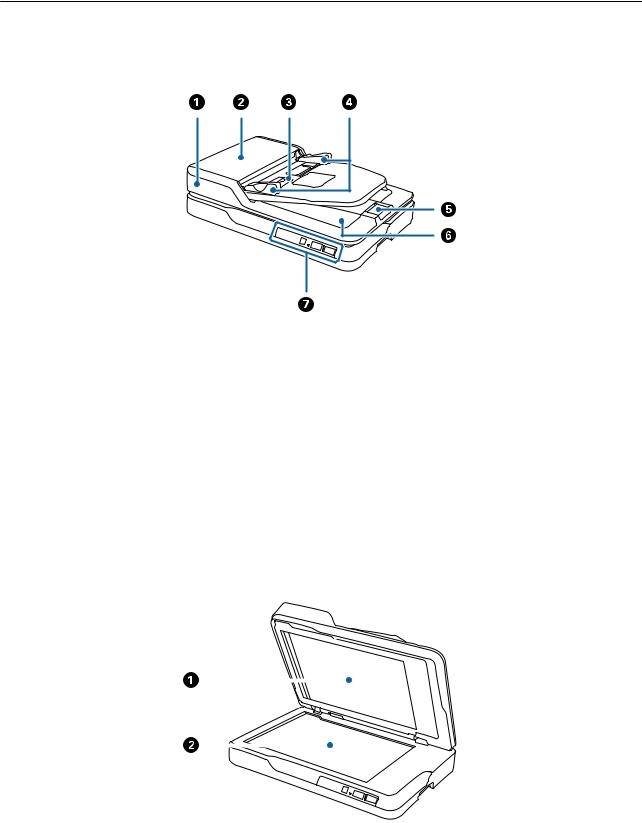
User's Guide
Scanner Basics
Scanner Basics
Part Names and Functions
Front
A |
ADF (Automatic Document Feeder) |
Feeds loaded originals automatically. |
|||
|
|
|
|
|
|
B |
ADF cover |
Open it when cleaning the ADF or removing jammed paper. |
|||
|
|
|
|
|
|
C |
Input tray |
Loads originals. When scanning is complete, check the center |
|||
|
|
|
window for ejected originals. |
||
|
|
|
|
|
|
D |
Edge guides |
Feeds originals straight into the scanner. Slide to the edges of the |
|||
|
|
|
originals. |
||
|
|
|
|
|
|
E |
Stopper |
Prevents ejected originals from falling off the tray extension. |
|||
|
|
|
|
|
|
F |
Output tray |
Holds originals ejected from the scanner. |
|||
|
|
|
|
|
|
G |
Control panel |
Operates the scanner. |
|||
|
|
|
|
|
|
|
|
|
|
|
|
|
|
|
|
|
|
10
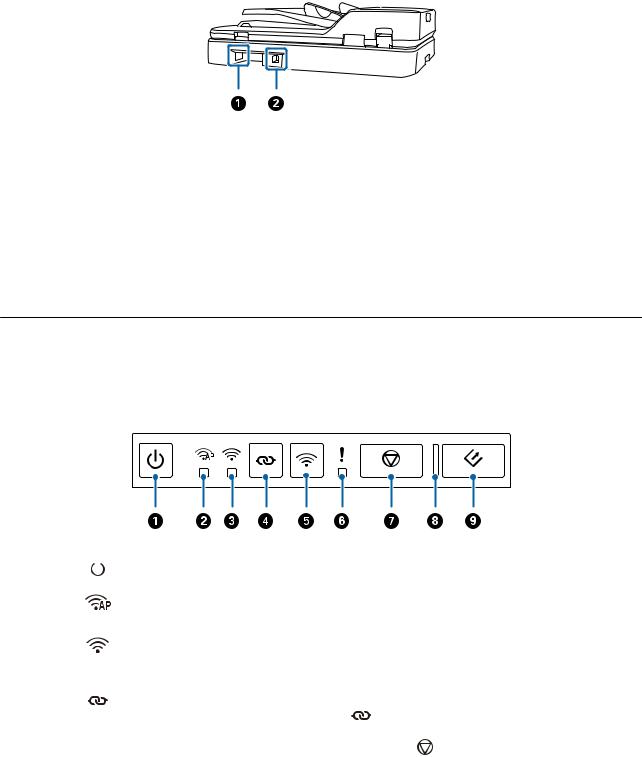
User's Guide
|
|
Scanner Basics |
|||
|
|
|
|
|
|
A |
Document mat |
|
|
Blocks external light while scanning. Remove it when cleaning the |
|
|
|
|
|
ADF or removing jammed originals. |
|
|
|
|
|
|
|
B |
Scanner glass |
|
|
Place originals that you cannot feed using the ADF. |
|
|
|
|
|
|
|
Back |
|
|
|
|
|
|
|
|
|
|
|
A |
AC inlet |
Connects the power cord. |
|
|
|
B |
USB port |
Connects a USB cable. |
|
|
|
Related Information
&“Specifications of Originals for Scanning from the ADF” on page 16
&“Cleaning the ADF” on page 59
Buttons and Lights on the Control Panel
Buttons
A |
|
|
|
Power button |
Turns the scanner on or off. |
||
|
|
|
|||||
|
|||||||
|
|
|
|
|
|
||
B |
|
|
|
AP mode light |
Indicates that the scanner is connected wirelessly in AP |
||
|
|
|
|
|
mode. |
|
|
|
|
|
|
|
|
||
C |
|
|
|
Wi-Fi light |
Blue indicates that the scanner is connected to a wireless |
||
|
|
|
|
|
(Wi-Fi) network. White indicates it is searching for an access |
||
|
|
|
|
|
point. |
|
|
|
|
|
|
|
|
||
D |
|
|
|
Wi-Fi connect button |
Press the WPS button on the access point, and then press |
||
|
|
|
|
|
the |
button for more than three seconds to connect to a |
|
|
|
|
|
|
Wi-Fi network. See the chapter “Network Settings” for more |
||
|
|
|
|
|
details. Press the |
button to cancel the settings. |
|
|
|
|
|
|
|
|
|
11
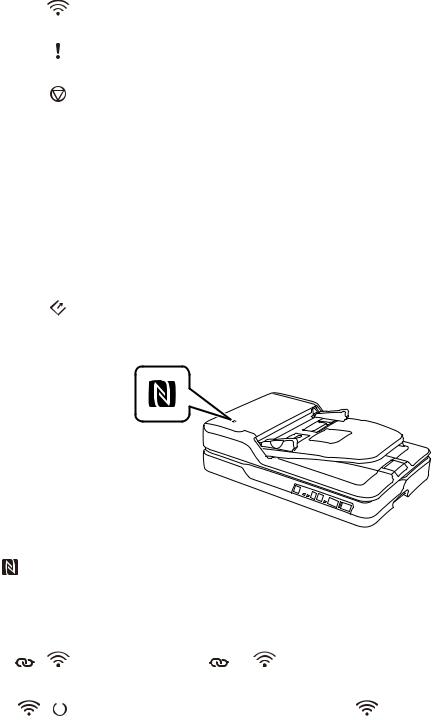
User's Guide
Scanner Basics
E |
|
Wi-Fi on/off button |
Press this button for more than three seconds to turn off the |
|
|
|
wireless signal. Press again to turn on the signal. |
|
|
|
|
F |
|
Error light |
Indicates that an error has occurred. See “Error Indicators of |
|
|
|
Light” for more details. |
|
|
|
|
G |
|
Stop button |
Cancels scanning. |
|
|
|
Cancels Wi-Fi settings by push button setup (WPS). |
|
|
|
Press this to release the error when a network connection |
|
|
|
error occurs. |
|
|
|
Cancels a firmware update over a network connection. |
|
|
|
|
H |
– |
Ready light |
On : The scanner is ready to be used. |
|
|
|
Flashing : The scanner is scanning, waiting to scan, |
|
|
|
processing, or sleeping. |
|
|
|
Off : The scanner cannot be used because the power is off or |
|
|
|
an error has occurred. |
|
|
|
|
I |
|
Start button |
Starts scanning. |
|
|
|
|
|
NFC tag |
Hold a smart device over this tag to scan directly from the smart |
|
|
device. |
|
|
|
Additional functions are available with different combinations of buttons.
+ |
|
|
Hold down the |
and |
buttons for more than three seconds to start PIN Code Setup |
|
|
|
|
(WPS). See the chapter “Network Settings” for more details. |
|||
|
|
|
|
|
||
+ |
|
|
Turn on the scanner while holding down the |
button to restore the default network |
||
|
|
|||||
|
||||||
|
|
|
settings. |
|
|
|
|
|
|
|
|
|
|
Related Information
&“Network Settings” on page 51
&“Error Indicators” on page 13
&“Scanning from Smart Devices Using NFC Tag” on page 50
12
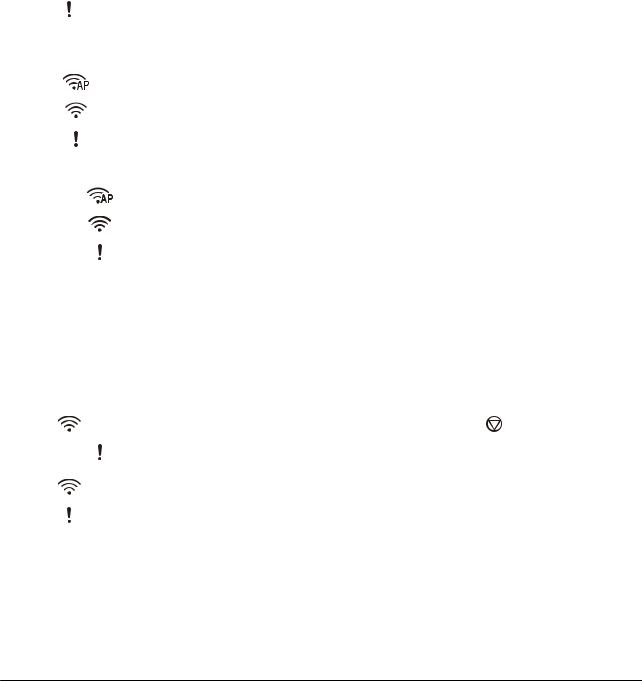
User's Guide
Scanner Basics
Error Indicators
Error of scanner
Indicators |
Situation |
Solutions |
|
|
|
|
|
Flashing slowly |
A paper jam occurred. |
Open the ADF cover, and then remove |
|
|
jammed originals. Close the cover to |
||
|
|
||
|
|
release the error. Load the originals |
|
|
|
again. |
|
|
|
|
|
Flashing fast |
A fatal error has occurred. |
Turn the power off and on again. If the |
|
|
error continues to occur, contact your |
||
|
|
||
Flashing fast |
|
local dealer. |
|
|
|
||
Flashing fast |
|
|
|
Ready light Flashing fast |
|
|
|
|
|
|
|
On |
The scanner has started in recovery |
Follow the steps below to try to up- |
|
mode because the firmware update |
date the firmware again. |
||
|
|||
On |
failed. |
1. Connect the computer and the scan- |
|
|
|||
On |
|
ner with a USB cable. (During recovery |
|
|
mode, you cannot update the firm- |
||
|
|
||
Ready light Off |
|
ware over a network connection.) |
|
|
|
||
|
|
2. Visit your local Epson website for fur- |
|
|
|
ther instructions. |
|
|
|
|
Error of Network Connection
Indicators |
Situation |
|
Solutions |
|
|
|
|
|
|
Flashing slowly |
An access point settings error has oc- |
Press the |
button to release the er- |
|
curred. |
||||
|
ror, and then restart the devices you |
|||
On |
|
|||
|
want to connect to the network. Re- |
|||
|
|
connect to the network. |
||
Flashing slowly |
An access point settings error has oc- |
|||
|
|
|||
curred (a security error). |
|
|
||
|
|
|
||
Flashing slowly |
|
|
|
|
|
|
|
|
|
Related Information
&“Removing Jammed Originals from the Scanner” on page 67
&“Making Wi-Fi Settings from the Control Panel” on page 54
&“Network Problems” on page 74
Information on Applications
This section introduces the software products available for your scanner. The latest software can be installed at the Epson Web site.
13
User's Guide
Scanner Basics
Epson Scan 2
Epson Scan 2 is a driver for controlling your scanner, enabling a variety of scan settings. This also allows you to start either as a standalone application or by using TWAIN-compliant application software.
See the Epson Scan 2 help for details on using the application.
Document Capture Pro / Document Capture
This application allows you to rearrange pages or correct rotation for image data, and then save the data, send it by email, send it to a server, or send it to a cloud service. By registering frequently used scan process settings with a name such as "job", you can scan by simply selecting “job”.
Document Capture Pro is for Windows only. For Mac OS X, use Document Capture, and for Windows Server, use Document Capture Pro Server.
See the Document Capture Pro help for details on using the application.
EPSON Software Updater
EPSON Software Updater is an application that checks for new or updated applications on the internet and installs them.
You can also update the scanner’s digital manual.
Note:
Windows Server operating systems are not supported.
Epson DocumentScan
Epson DocumentScan is an application that allows you to scan documents through smart devices such as smartphones and tablet devices. You can save the scanned data in smart devices or cloud services, and send by e- mail. You can download and install this app from the App Store or Google Play.
EpsonNet Config
EpsonNet Config is an application that allows you to set network interface addresses and protocols. See the operations guide for EpsonNet Config or the application’s help for more details.
Note:
You can run Web Config from EpsonNet Config.
Web Config
Web Config is an application that allows you to boot in a Web browser such as Internet Explorer or Chrome using a computer or a smart device. You can also set a network service or change settings for scanners. Make sure you connect the scanner and devices to the same network when using Web Config.
To run Web Config, enter the IP address of the scanner on web browser. You can check the IP address on Epson Scan 2.
14

User's Guide
Scanner Basics
Format:
IPv4: http://the scanner’s IP address/ IPv6: http://[the scanner’s IP address]/
Examples:
IPv4: http://192.168.100.201/ IPv6: http://[2001:db8::1000:1]/
Note:
You can also run Web Config from EpsonNet Config or using WSD port.
Options Information
Network Interface Unit Codes
You can scan through a network by using Document Capture Pro (Windows only). By registering frequently used scan process settings such as save, sort, transfer, and so on, with a name such as "job", you can reduce the workload and increase efficiency by simply selecting “job” on the control panel. See the manual for more details.
Part name |
Codes |
Specifications |
|
|
|
Network Interface Unit * |
B12B808451 |
Available for 1000BASE-T/100BASE-TX/10BASE-T, IPv6, |
|
|
IEEE802.3az |
|
|
|
*When mounted, you cannot use the scanner or a computer over a USB connection.
15

User's Guide
Specifications of Originals and Placing Originals
Specifications of Originals and Placing
Originals
Specifications of Originals for Scanning from the ADF
This section explains the specifications and conditions of originals that can be loaded in the ADF.
General Specifications for Originals being Scanned
Type of Original |
Thickness |
Size |
|
|
|
Plain paper |
50 to 120 g/m2 |
Single sided scanning |
Fine paper |
|
Maximum: 215.9×3,048.0 mm (8.5×120.0 in.) |
Recycled paper |
|
Minimum: 89×127 mm (3.5×5.0 in.) |
|
|
Double sided scanning |
|
|
Maximum: 215.9×297.0 mm (8.5×11.7 in.) |
|
|
Minimum: 89×170 mm (3.5×6.7 in.) |
|
|
|
Note:
All originals must be flat at the leading edge.
Specifications of Standard Size Originals for Single Sided Scanning
This section provides a list of the standard size originals you can load into the ADF.
16
User's Guide
Specifications of Originals and Placing Originals
Size |
Measurement |
Thickness |
Paper Type |
Loading Capacity |
|
|
|
|
|
A4 |
210×297 mm |
50 to 120 g/m2 |
Plain paper |
Thickness of the stack of originals: |
|
(8.3×11.7 in.) |
|
Fine paper |
under 5 mm |
|
|
|
||
|
|
|
Recycled paper |
(80 g/m2: 50 sheets) |
Letter |
215.9×279.4 mm |
|
||
|
|
|||
|
|
The loading capacity varies |
||
|
(8.5×11 in.) |
|
|
|
|
|
|
depending on the paper type. |
|
|
|
|
|
|
Legal |
215.9×355.6 mm |
|
|
|
|
(8.5×14 in.) |
|
|
|
|
|
|
|
|
B5 |
182×257 mm |
|
|
|
|
(7.2×10.1 in.) |
|
|
|
|
|
|
|
|
A5 |
148×210 mm |
|
|
|
|
(5.8×8.3 in.) |
|
|
|
|
|
|
|
|
B6 |
128×182 mm |
|
|
|
|
(5.0×7.2 in.) |
|
|
|
|
|
|
|
|
A6 |
105×148 mm |
|
|
|
|
(4.1×5.8 in.) |
|
|
|
|
|
|
|
|
Related Information
& “Placing Standard Size Originals” on page 19
Specifications of Standard Size Originals for Double Sided Scanning
This section provides a list of the standard size originals you can load into the ADF.
Size |
Measurement |
Thickness |
Paper Type |
Loading Capacity |
|
|
|
|
|
A4 |
210×297 mm |
50 to 120 g/m2 |
Plain paper |
Thickness of the stack of originals:: |
|
(8.3×11.7 in.) |
|
Fine paper |
under 5 mm |
|
|
|
||
|
|
|
Recycled paper |
(80 g/m2: 50 sheets) |
Letter |
215.9×279.4 mm |
|
||
|
|
|||
|
|
The loading capacity varies |
||
|
(8.5×11 in.) |
|
|
|
|
|
|
depending on the paper type. |
|
|
|
|
|
|
B5 |
182×257 mm |
|
|
|
|
(7.2×10.1 in.) |
|
|
|
|
|
|
|
|
A5 |
148×210 mm |
|
|
|
|
(5.8×8.3 in.) |
|
|
|
|
|
|
|
|
Specifications of Long Paper (for Single Sided Scanning Only)
This section provides the specifications for long paper that you can load into the ADF.
17
User's Guide
Specifications of Originals and Placing Originals
Size |
Thickness |
Paper Type |
Loading Capacity |
|
|
|
|
Width: 89.0 to 215.9 mm |
50 to 120 g/m2 |
Plain paper |
1 sheet |
(3.5 to 8.5 in.) |
|
Fine paper |
|
Length: 393.7 to 3,048.0 mm |
|
Recycled paper |
|
(15.5 to 120.0 in.) |
|
|
|
|
|
|
|
Note:
You can scan long paper up to 393.7 mm (15.5 inches) in length at a resolution of 600 dpi or less, and over 393.7 mm (15.5 inches) and up to 3,048.0 mm (120 inches) at a the resolution of 300 dpi or less.
Related Information
& “Placing Long Paper” on page 20
Types of Originals that Require Attention
The following types of originals may not be successfully scanned using the ADF.
Originals with an uneven surface such as letter head paper
Originals with fold lines
Perforated originals
Types of Originals that Must Not be Scanned
To prevent damage to the originals or the scanner, do not load the following originals in the ADF. For these types of originals, use the scanner glass.
Photos
Originals with holes
Booklets
Non-paper originals (such as clear files, fabric, and metal foil)
Originals with staples or paper clips
Originals with glue attached
Wrinkled or curled originals
Transparent originals such as OHP film
Originals with carbon paper on the back
Originals with wet ink
Originals with sticky notes attached
Originals with labels or tapes not firmly stuck down
Post cards
Envelopes
Business cards
Plastic cards
18
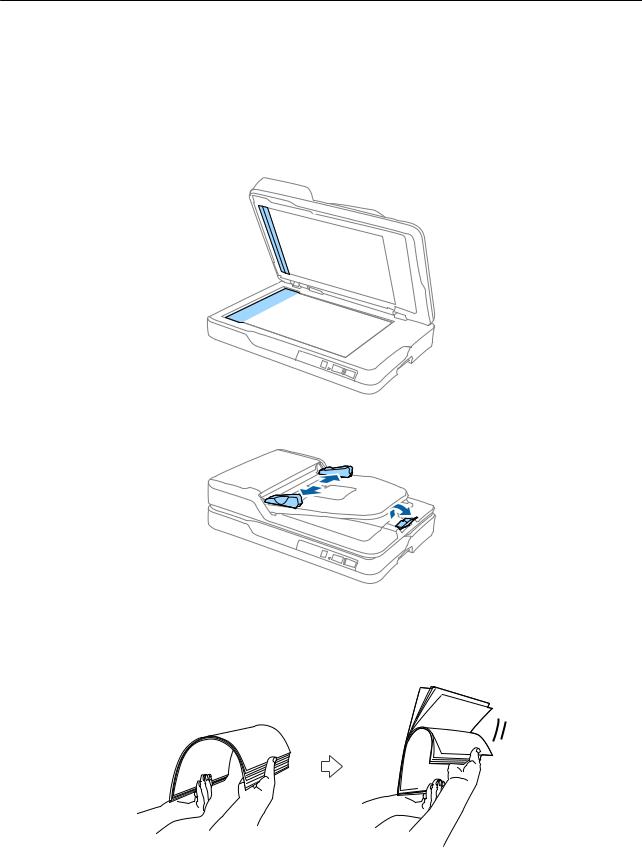
User's Guide
Specifications of Originals and Placing Originals
Carbon-less papers
Thermal papers
Placing Originals into the ADF
Placing Standard Size Originals
Note:
Remove any documents from the scanner glass. Make sure there is no dust or dirt on the glass and the clear part shown below before scanning.
1.Slide the edge guides on the ADF input tray all the way out. When scanning A4 size paper, raise the stopper.
2.Fan the originals.
Hold both ends of the originals and fan them a few times, and then tap the top edges of the paper on a flat surface to align the sheets.
19

User's Guide
Specifications of Originals and Placing Originals
3.Place the originals into the ADF input tray facing up and with the top edge facing into the ADF. Slide the originals into the ADF until they meet resistance.
4.Slide the edge guides to fit the edge of the originals making sure there are no gaps between the originals and the edge guides. Otherwise, the originals may be fed askew.
Related Information
&“Specifications of Standard Size Originals for Single Sided Scanning” on page 16
&“Cleaning the ADF” on page 59
&“Cleaning the Scanner Glass” on page 62
Placing Long Paper
Note:
Remove any documents from the scanner glass. Make sure there is no dust or dirt on the glass and the clear part shown below before scanning.
20
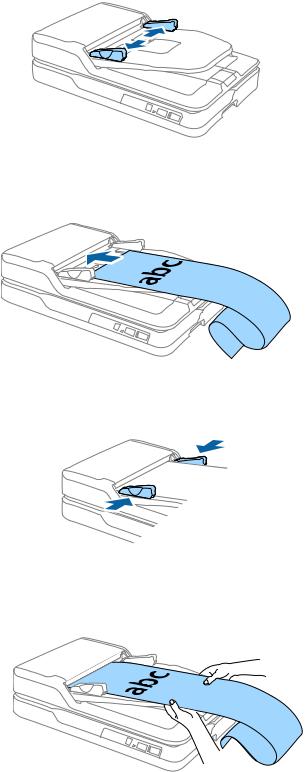
User's Guide
Specifications of Originals and Placing Originals
1.Slide the edge guides on the ADF input tray all the way out.
2.Load the original into the input tray straight, facing up and with the top edge facing into the ADF. Slide the original into the ADF until it meets resistance.
3.Adjust the edge guides to fit the edge of the long paper making sure there is no gap between the paper edge and the edge guide. Otherwise, the originals may be fed askew or jammed.
Note:
Support the long paper on the input side so that it does not drop out of the ADF, and the output side so that the ejected paper does not fall from the output tray.
Related Information
&“Specifications of Long Paper (for Single Sided Scanning Only)” on page 17
&“Cleaning the ADF” on page 59
&“Cleaning the Scanner Glass” on page 62
21

User's Guide
Specifications of Originals and Placing Originals
Placing Originals on the Scanner Glass
Placing an Original
cImportant:
Do not place heavy objects on the scanner glass and do not press the glass with too much force.
Do not open the ADF wider than an angle of 70 degrees. This could damage the hinge.
1.Open the ADF.
2.Place your original face down on the scanner glass making sure the upper corner of the side you want to scan is against the corner of the scanner next to the arrow mark.
22
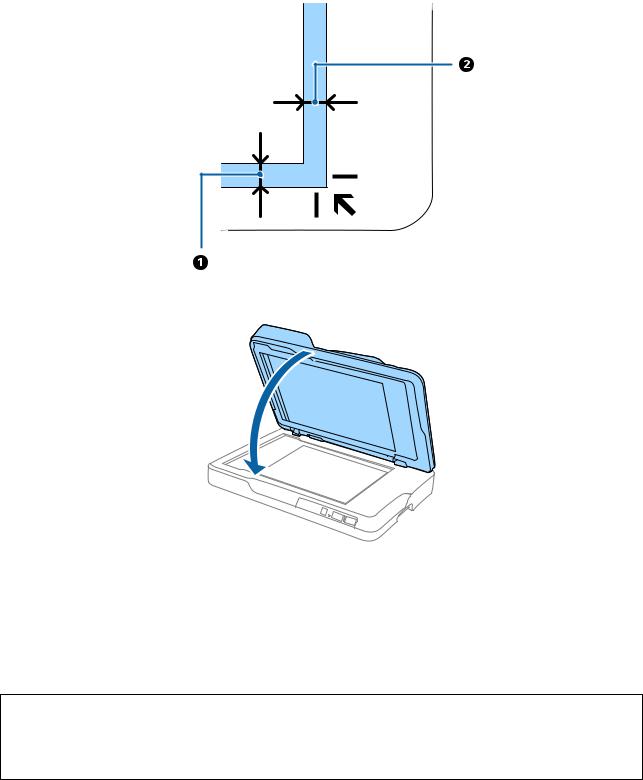
User's Guide
Specifications of Originals and Placing Originals
Note:
The maximum size of the original you can scan is 216×297 mm (8.5×11.7 in.).
You can avoid cropping by moving the original about 2.5 mm (0.1 inches) away from the top and side edges indicated by A and B in the following figure.
3.Close the ADF gently so that your original does not move.
Note:
Always keep the scanner glass clean.
Do not leave originals on the scanner glass for an extended period of time as they may stick.
Placing Thick Originals
cImportant:
Do not place heavy objects on the scanner glass and do not press the glass with too much force.
Do not open the ADF wider than an angle of 70 degrees. This could damage the hinge.
23

User's Guide
Specifications of Originals and Placing Originals
1.Open the ADF.
2.Place your thick original face down on the scanner glass making sure the upper corner of the side you want to scan is against the corner of the scanner next to the arrow mark.
3.Close the ADF gently so that your original does not move.
Note:
If you scan originals over 10 mm (0.4 inch) thick, scan the original by leaving the ADF open and gently pressing down on your original to flatten it.
24

User's Guide
Basic Scanning
Basic Scanning
Scanning Using Epson Scan 2
You can scan the originals using detailed settings that are suitable for text documents.
1.Place the original.
Note:
If you want to scan multiple originals, place them into the ADF.
2.Start Epson Scan 2.
Windows 10
Click the start button, and then select All apps > EPSON > Epson Scan 2.
Windows 8.1/Windows 8/Windows Server 2012 R2/Windows Server 2012
Enter the application name in the search charm, and then select the displayed icon.
Windows 7/Windows Vista/Windows XP/Windows Server 2008 R2/Windows Server 2008/Windows Server 2003 R2/Windows Server 2003
Click the start button, and select All Programs or Programs > EPSON > Epson Scan 2 > Epson Scan 2.
Mac OS X
Select Go > Applications > Epson Software > Epson Scan 2.
25
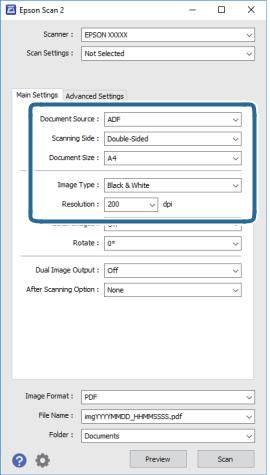
User's Guide
Basic Scanning
3.Make the following settings on the Main Settings tab.
Document Source: Select the source where the original is placed.
Scanning Side: Select the side of the original you want to scan when scanning from ADF.
Document Size: Select the size of the original you placed.
Image Type: Select the color for saving the scanned image.
Resolution: Select the resolution.
4.Make other scan settings if necessary.
You can preview the scanned image by click the Preview button. The preview window opens, and the previewed image is displayed.
When you performed preview from the ADF, original is ejected from the ADF after a preview is generated. Place the ejected original again.
26
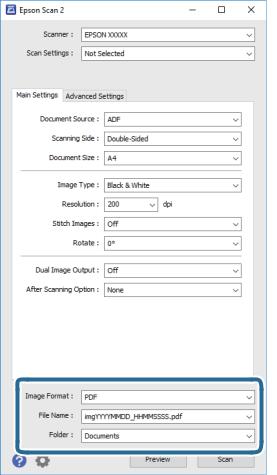
User's Guide
Basic Scanning
On the Advanced Settings tab, you can make image adjustments using detailed settings which are suitable for text documents, such as the following.
Unsharp Mask: Select to enhance and sharpen the outlines of the image.
Descreening: Select to remove moiré patterns (web-like shadows) that appear when scanning printed papers such as a magazine.
Text Enhancement: Select to make blurred letters in the original clear and sharp.
Auto Area Segmentation: Select to make letters clear and images smooth when performing black and white scanning for a document that contains images.
Note:
Some items may not be available depending on other settings you made.
5.Set the file saving settings.
Image Format: Select the save format from the list.
You can make detailed settings for each save format except BITMAP and PNG. After selecting the save format, select Options from the list.
File Name: Check the save file name displayed.
You can change settings for file name by selecting Settings from the list.
Folder: Select the save folder for the scanned image from the list.
You can select other folder or create a new folder by selecting Select from the list.
27

User's Guide
Basic Scanning
6.Click Scan.
The scanned image is saved to the folder you specified.
Related Information
&“Placing Originals into the ADF” on page 19
&“Placing Originals on the Scanner Glass” on page 22
&“Epson Scan 2” on page 14
&“Setting a Resolution That Suits the Scanning Purpose” on page 28
&“Image Adjustment Features” on page 35
&“Editing Scanned Pages Using Epson Scan 2” on page 42
Setting a Resolution That Suits the Scanning Purpose
Advantages and Disadvantages of Increasing the Resolution
Resolution indicates the number of pixels (smallest area of an image) for each inch (25.4 mm), and is measured in dpi (dots per inch). The advantage of increasing the resolution is that the details in the image become fine. The disadvantage is that the file size becomes large.
File size becomes large
(When you double the resolution, the file size becomes about four times larger.)
Scanning, saving, and reading the image takes a long time
Sending and receiving emails or faxes takes a long time
The image becomes too large to fit the display or print on the paper
List of Recommended Resolutions to Suit Your Purpose
See the table and set the appropriate resolution for the purpose of your scanned image.
Purpose |
Resolution (Reference) |
|
|
Displaying on the screen |
Up to 200 dpi |
Sending by email |
|
|
|
Using Optical Character Recognition (OCR) |
200 to 300 dpi |
Creating a text searchable PDF |
|
|
|
Printing using a printer |
200 to 300 dpi |
Sending by fax |
|
|
|
Scanning Using Document Capture Pro (Windows)
This application allows you to perform various tasks such as saving the image to your computer, sending it by email, printing, and uploading to a server or a cloud service. You can also use a variety of methods to sort the
28
